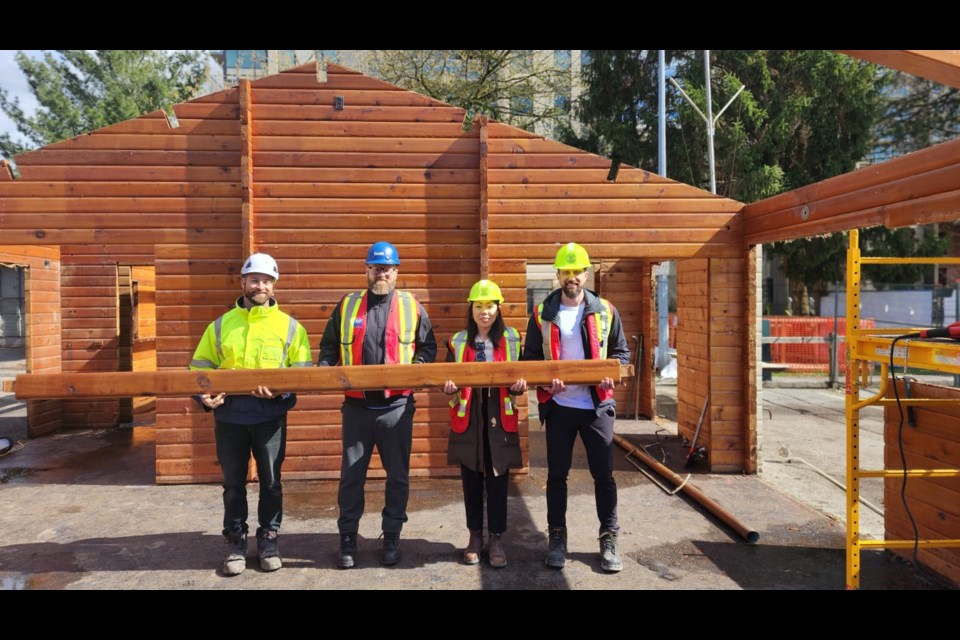A long-standing Richmond lawn bowling clubhouse from the 1960s was recently taken down to make room for a new building.
Rather than taking an excavator to the old clubhouse, the City of Richmond partnered with Burnaby-based Vema Deconstruction to dismantle the building piece by piece. Their goal was to donate and repurpose as much material as possible.
The deconstruction of the building took about a week in March with more than 28,000 pounds of lumber from the 2,200-square-foot building donated to Habitat for Humanity.
The original clubhouse was built like a log cabin with all cedar wood and the pieces of wood were all slotted into each other instead of using nails, explained Erick Serpas Ventura, co-founder and CEO of Vema Deconstruction.
He added that older buildings often used old-growth trees, which resulted in 60 per cent heavier, denser and sturdier lumber, in comparison to softer materials like spruce and fir from younger trees in newer homes.
Ventura said the main goal of deconstruction, or “sustainable demolition,” is to divert material away from the landfills.
“This gives owners, buildings and cities an opportunity to help channel this material into opportunities to be reused in modular housing, tiny homes and the future of building with these materials again,” said Ventura.
“We want to give houses a second chance and continue their history through as much material as we can repurpose.”
Habitat for Humanity, a non-profit organization that helps families build safe and affordable housing, will sell the donated materials to fund home construction.
So how does the deconstruction of a building work?
First, an inventory of the building is taken for items such as kitchen cabinets, appliances, flooring, windows, furniture and any reusable lumber, explained Ventura.
Next, the list is sent to an appraiser, who determines the value of the donatable material from the building.
Then, a tax donation information sheet is given to the owner for tax credit purposes.
Ventura explained that this tax donation step helps reduce the cost of their services.
He told the Richmond News there is a need for more sustainable practices while highlighting the importance of preserving historical homes and reducing waste through recycling and repurposing materials.
“We found that many people didn’t know there’s an option aside from demolition, and when we found out the City of Richmond was looking at a pilot project to try deconstruction we jumped on board,” said Ventura.
“It became a pilot project … to basically display what deconstruction is about.”
Clubhouse long-time coming
Rebuilding the lawn bowling clubhouse received public criticism in 2019 regarding its hefty price tag of $5.3 million.
Eventually, Richmond City Council approved it with a 5-4 vote in 2019 and preliminary designs approved in 2020.
However, the city put the project on pause citing supply chain issues and construction costs in 2022 when it was supposed to be completed. The pandemic also pushed the completion date to 2023.
While the project was on hold, city staff revised the construction timeline and changes were made to reduce the size of the new building to stay within the project budget.
The new Bowling Green Community Activity Centre will be between 3,100 to 3,300 square feet instead of the original plan of 4,900 square feet.
The construction of the new building began in March, confirmed city spokesperson Clay Adams.
It is slated to be finished next summer.
Got an opinion on this story or any others in Richmond? Send us a letter or email your thoughts or story tips to [email protected]. To stay updated on Richmond news, sign up for our daily headline newsletter.



